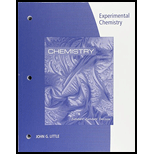
Concept explainers
(a)
Interpretation: The chemical equation describing the radioactive decay of each of the given nuclides is to be stated.
Concept introduction: Nuclei of radioactive element decompose in various ways. There are two major categories. One involves a change in mass number of the decaying nucleus, while others do not. Types of radioactive processes include
Beta particle production decay involves the production of beta particle
A helium nucleus
Positron
To determine: The chemical equation for the decay of given nuclide.
(b)
Interpretation: The chemical equation describing the radioactive decay of each of the given nuclides is to be stated.
Concept introduction: Nuclei of radioactive element decompose in various ways. There are two major categories. One involves a change in mass number of the decaying nucleus, while others do not. Types of radioactive processes include
Beta particle production decay involves the production of beta particle
A helium nucleus
Positron
To determine: The chemical equation for the decay of given nuclide.
(c)
Interpretation: The chemical equation describing the radioactive decay of each of the given nuclides is to be stated.
Concept introduction: Nuclei of radioactive element decompose in various ways. There are two major categories. One involves a change in mass number of the decaying nucleus, while others do not. Types of radioactive processes include
Beta particle production decay involves the production of beta particle
A helium nucleus
Positron
To determine: The chemical equation for the decay of given nuclide.
(d)
Interpretation: The chemical equation describing the radioactive decay of each of the given nuclides is to be stated.
Concept introduction: Nuclei of radioactive element decompose in various ways. There are two major categories. One involves a change in mass number of the decaying nucleus, while others do not. Types of radioactive processes include
Beta particle production decay involves the production of beta particle
A helium nucleus
Positron
To determine: The chemical equation for the decay of given nuclide
Want to see the full answer?
Check out a sample textbook solution
Chapter 19 Solutions
Lab Manual for Zumdahl/Zumdahl/DeCoste¿s Chemistry, 10th Edition
- (a) 21.8 Name the following compounds. & (b) Br (e) O₂N. (h) H (c) Br (d) NH2 ☑N Br H ہیں Ph (g) OMe бл .0-0.e 21.9 Draw a structural formula for each compound. (a) 2,3-Dinitrotoluene (c) Diphenylmethanol (e) p-Nitroaniline (b) 3-Propylanisole (d) m-Propylphenol (f) Pentabromobenzenearrow_forwardIs this the major product of this reaction?arrow_forwardPlease helparrow_forward
 Chemistry: Principles and PracticeChemistryISBN:9780534420123Author:Daniel L. Reger, Scott R. Goode, David W. Ball, Edward MercerPublisher:Cengage Learning
Chemistry: Principles and PracticeChemistryISBN:9780534420123Author:Daniel L. Reger, Scott R. Goode, David W. Ball, Edward MercerPublisher:Cengage Learning Introductory Chemistry: A FoundationChemistryISBN:9781337399425Author:Steven S. Zumdahl, Donald J. DeCostePublisher:Cengage Learning
Introductory Chemistry: A FoundationChemistryISBN:9781337399425Author:Steven S. Zumdahl, Donald J. DeCostePublisher:Cengage Learning General, Organic, and Biological ChemistryChemistryISBN:9781285853918Author:H. Stephen StokerPublisher:Cengage Learning
General, Organic, and Biological ChemistryChemistryISBN:9781285853918Author:H. Stephen StokerPublisher:Cengage Learning- Chemistry: Matter and ChangeChemistryISBN:9780078746376Author:Dinah Zike, Laurel Dingrando, Nicholas Hainen, Cheryl WistromPublisher:Glencoe/McGraw-Hill School Pub Co
 World of Chemistry, 3rd editionChemistryISBN:9781133109655Author:Steven S. Zumdahl, Susan L. Zumdahl, Donald J. DeCostePublisher:Brooks / Cole / Cengage Learning
World of Chemistry, 3rd editionChemistryISBN:9781133109655Author:Steven S. Zumdahl, Susan L. Zumdahl, Donald J. DeCostePublisher:Brooks / Cole / Cengage Learning Chemistry & Chemical ReactivityChemistryISBN:9781133949640Author:John C. Kotz, Paul M. Treichel, John Townsend, David TreichelPublisher:Cengage Learning
Chemistry & Chemical ReactivityChemistryISBN:9781133949640Author:John C. Kotz, Paul M. Treichel, John Townsend, David TreichelPublisher:Cengage Learning





